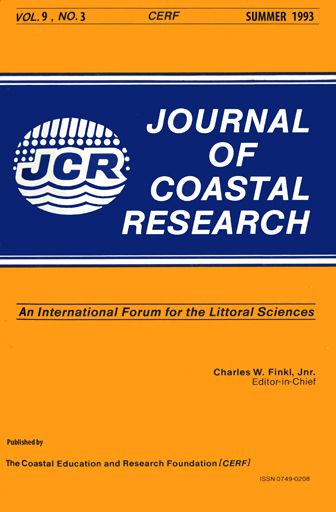The Effect of Tide Range on Beach Morphodynamics and Morphology: A Conceptual Beach Model
Keywords:
Beaches and tide range, micro-tidal, macro-tidal, beach model, beach changeAbstract
Natural beaches may be grouped into several beach types on the basis of breaker height (Hb), wave period (T), high tide sediment fall velocity (ws) and tide range (TR). These four variables are quantified by two dimensionless parameters: the dimensionless fall velocity (Ω= Hb/wsT) used by WRIGHT and SHORT (1984) to classify micro-tidal beaches, and the relative tide range (RTR = TR/Hb) introduced in this paper. The value of the dimensionless fall velocity indicates whether reflective, intermediate or dissipative surf zone conditions will prevail. The relative tide range reflects the relative importance of swash, surf zone and shoaling wave processes. A conceptual model is presented in which beach morphology (beach type) may be predicted using the dimensionless fall velocity and the relative tide range, whereby the mean spring tide range (MSR) is used to calculate the relative tide range. The model consists of the existing micro-tidal beach types, which as RTR Increases, shift from reflective to low tide terrace with and finally without rips; from intermediate to low tide bar and rips and finally ultra-dissipative; and from barred dissipative to non-barred dissipative and finally ultra-dissipative. Using this model, all wave-dominated beaches in all tidal ranges can be classified.


